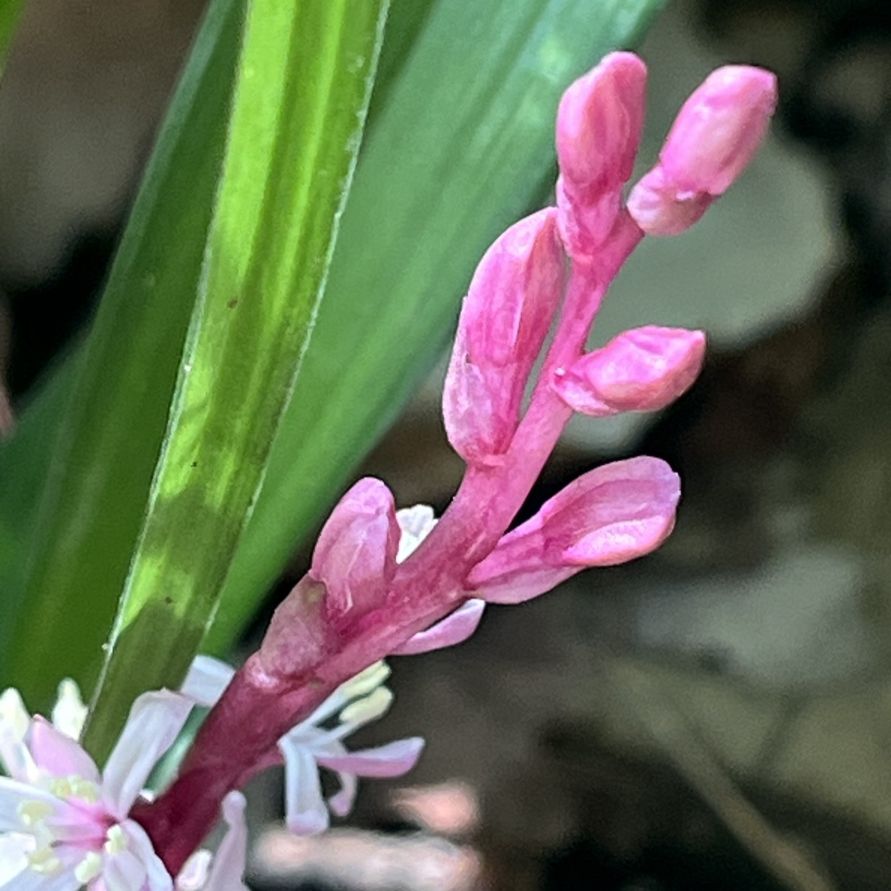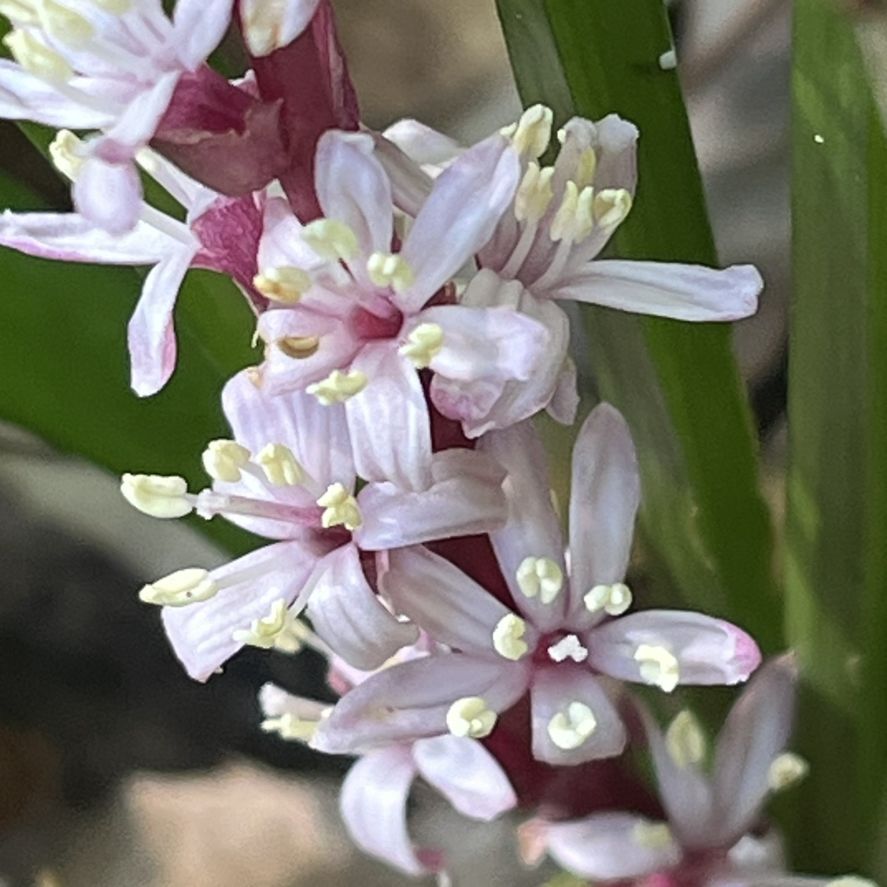キチジョウソウはスラリと伸びた根生葉の間から、珊瑚のような赤紫色の花茎を立ち上げ、可愛らしい薄紅色の花々を咲かせて甘く香ります。
Reineckea carnea has slender basal leaves. It has a coral-like purple flower stalk. It blooms with cute light pink flowers that have a sweet fragrance.
【仮名】キチジョウソウ, キチジョウラン, カンノンソウ
【和名】吉祥草, 吉祥蘭, 観音草
【英名】Reineckea carnea
【学名】Reineckea carnea
【誕生】10/ 05, 11/ 28
【開花】09, 10, 11月
【花色】Pink
キチジョウソウ
キチジョウソウの概要

キチジョウソウはクサスギカズラ科の常緑多年草。日本では本州の関東以西、四国、九州、国外では中国に分布します。山林で陽の当たらない湿ったところに群生。スラリと伸びた根生葉から、珊瑚のような赤紫色の花茎を立ち上げ、可愛らしい薄紅色の花々を咲かせて甘く香ります。
キチジョウソウの名前

キチジョウソウの和名は「この花が咲くと良いことがある」という言い伝えに由来します。吉祥は「吉事の兆し」という意味。「吉祥蘭」「観音草」とも呼ばれます。ラテン語の属名ライネッケアはドイツの園芸家ライネッケへの献名。種小名カルネアは「肉紅色の」という意味です。
キチジョウソウの姿形

キチジョウソウは根茎が這い広がり、葉が根生。葉は幅広の線形で縦に3~5本の脈が走ります。花は穂状に立ち上がり、下方が両性花、上方が雄花。どちらも花被が6裂、雄しべが6本で、下から順に咲き上がります。花後に赤色の液果を形成。野生動物が食べて種子を散らします。
キチジョウソウの逸話

キチジョウソウには仏教の逸話があります。お釈迦様が菩提樹の下で瞑想していたとき。通りかかった農夫が岩の上での着座を案じます。農夫は近くの草を刈って菩提樹の下に敷き、お釈迦様が静座…。この逸話が中国に伝わり、その刈り草が「吉祥草」と呼ばれるようになりました。
Reineckea carnea

Reineckea carnea is an evergreen perennial plant of the Asparagaceae family. In Japan, it is distributed in the Kanto region and west of Honshu, Shikoku, and Kyushu, and overseas in China. It grows in clusters in moist areas of mountain forests that are not exposed to sunlight. It has slender basal leaves. It has a coral-like purple flower stalk. It blooms with cute light pink flowers that have a sweet fragrance.
The Japanese name of Reineckea carnea means “good things will happen when this flower blooms.” The Latin genus name Reineckea is a tribute to the German horticulturist Reinecke. The specific name carnea means “red-fleshed.”
Reineckea carnea has a creeping rhizome that spreads and leaves grow on the roots. The leaves are broad and linear with 3 to 5 vertical veins. The flowers rise in spikes. The bisexual flowers are below and the male flowers are above. Both have six-lobed perianths and six stamens, and bloom from the bottom up. After flowering, they form red berries. Wild animals eat them and scatter the seeds.
There is a Buddhist anecdote about Reineckea carnea. When the Buddha was meditating under a bodhi tree, a passing farmer was concerned that the Buddha was sitting on a rock. The farmer cut some grass nearby and spread it under the bodhi tree, so that the Buddha could sit on it. This anecdote was introduced to China, and the cut grass became known as a “sign of good things.”


